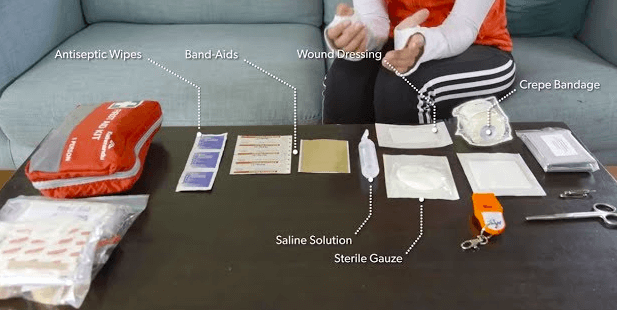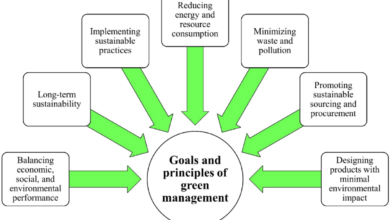Safety Essentials: The Complete Guide to Building Your First Aid Kit

Whether it’s a minor scrape or a more serious injury, emergencies can strike at any time. Being prepared with a fully stocked first aid kit is essential for handling these situations effectively. This comprehensive guide will take you through the steps to assemble a first aid kit that can address a wide range of common health and safety concerns.
Understanding First Aid Kits
First aid kits are collections of supplies and equipment used to give initial care in case of an injury or illness. They are crucial for treating minor injuries at home or in the workplace and can make a significant difference while waiting for professional medical help in more severe cases. A well-prepared first aid kit is your first line of defense in managing health emergencies.
The Basics of Building Your First Aid Kit
Building a first aid kit doesn’t have to be daunting. You can start with a basic kit and customize it based on your family’s specific needs or potential risks in your activities or environment. Here’s what you need to know to get started.
1. Choosing the Right Container
Your first aid kit should be in a durable, water-resistant container that can be easily opened and transported. It should be large enough to hold all your supplies but compact enough to be portable. Plastic containers with divided compartments, or specialized first aid bags with clear markings, are excellent choices.
2. Essential Supplies
Every first aid kit should include the following fundamental items:
Bandages:
A variety of sizes for small cuts, blisters, or abrasions.
Adhesive tape:
For securing bandages or dressings.
Antiseptic wipes or solution:
To clean wounds or sterilize instruments.
Sterile gauze pads:
For covering and protecting wounds.
Elastic wrap bandages:
Ideal for wrapping sprains or strains.
Disposable gloves:
To prevent contamination when treating wounds.
Scissors and tweezers:
For cutting tape, bandages, or removing splinters.
Safety pins:
To secure bandages.
Thermometer:
Prefer digital for its accuracy and ease of use.
Pain relievers:
Such as acetaminophen, ibuprofen, or aspirin.
Allergy medication:
Including antihistamines and epinephrine auto-injectors if prescribed.
Remember to check expiration dates regularly and replace any used or out-of-date contents.
3. Specialized Items
Depending on your needs, you might want to include:
Insect repellent and sting relief treatment
Sunscreen and aloe vera gel for sunburn treatment
Burn gel or cream
Instant cold packs
Water purification tablets
Specific medications or treatments recommended by your healthcare provider
4. Personalization
Consider the health needs of those likely to use the kit. If someone has a chronic condition like asthma or diabetes, include their specific medications. For outdoor adventures, add snake bite kits or tick removal tools.
5. Information and References
Include a basic first aid manual or instructions for using the items in your kit. It’s also wise to have a list of emergency contacts and any personal medical information that could be vital in an emergency.
Maintenance Tips
A first aid kit is only as useful as its contents are functional and up to date. Schedule a review of your kit every six months. Check for expired items, replenish supplies that have been used, and consider whether any new items need to be added based on your current lifestyle or health changes.
Using Your First Aid Kit
Familiarize yourself with the contents of your first aid kit and how to use them. In an emergency, you’ll need to act quickly, and knowing what you have and how to use it can significantly impact the effectiveness of the care you provide.
Advanced Considerations
For those who want to be even more prepared, consider taking a first aid course. Many organizations offer training that can provide you with the skills and confidence to use your first aid kit effectively, as well as how to handle common emergency situations until professional help is available.
For individuals seeking an extra layer of preparedness, enrolling in a first aid course is a prudent step. These courses, offered by various organizations, impart invaluable skills and instill the confidence necessary to utilize a first aid kit optimally. By participating in such training, individuals gain practical knowledge on administering aid in diverse emergency scenarios, bolstering their ability to respond effectively to unforeseen circumstances.
First aid courses typically cover a spectrum of topics, ranging from basic wound care to cardiopulmonary resuscitation (CPR) techniques. Participants learn to identify and address injuries promptly, minimizing the risk of complications and promoting faster recovery. Moreover, these courses emphasize the importance of remaining calm and composed in high-pressure situations, enabling individuals to make informed decisions and provide assistance with clarity and confidence.
Furthermore, beyond equipping individuals with essential skills, first aid courses foster a culture of preparedness within communities. By disseminating knowledge on emergency response procedures, these courses contribute to building resilient and proactive societies where individuals are empowered to assist others in times of need.
In essence, investing time in a first aid course not only enhances personal preparedness but also cultivates a collective ethos of safety and support, ultimately fostering safer and more resilient communities.
Conclusion
A well-equipped first aid kit is a valuable asset in any home, car, or workplace. It provides peace of mind, knowing that you’re prepared to handle minor injuries and emergencies. Remember, the goal of first aid is not to replace professional medical treatment but to provide immediate, temporary care until that treatment is available. Building your first aid kit is an important step in ensuring the safety and well-being of yourself and those around you.



